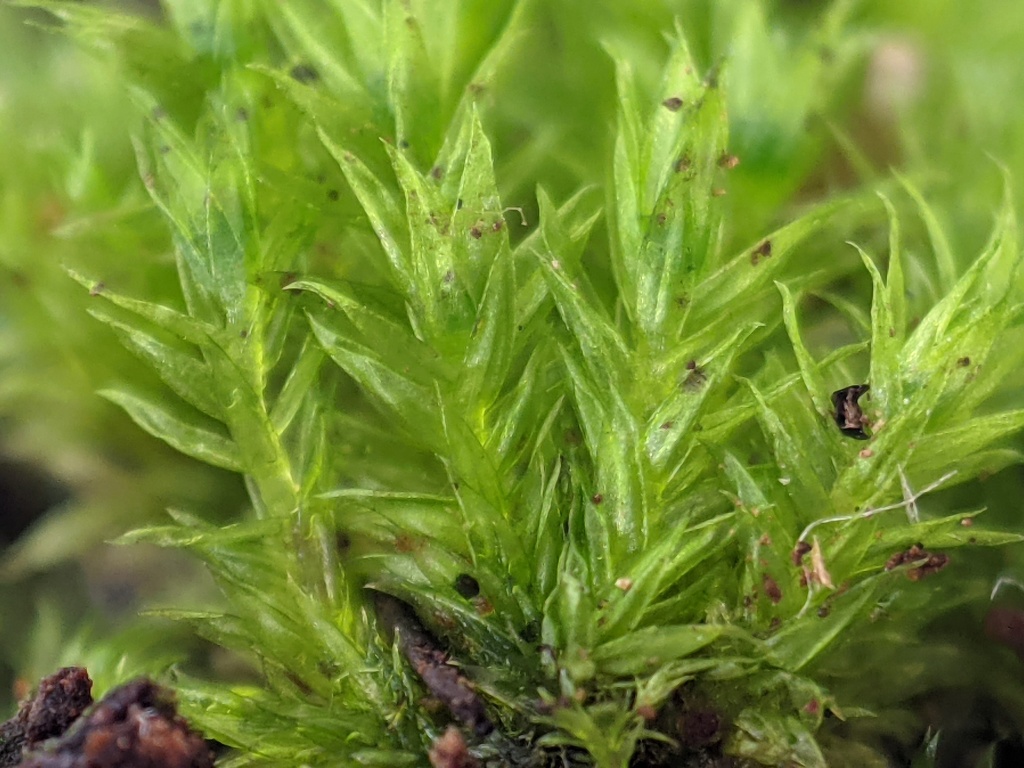Sauloma
Dioicous. Asexual reproduction by fusiform gemmae borne on elongate filaments in leaf axils. Soft, pale mats on soil, rocks, stumps and logs. Stems sparingly branched, with sparse pale rhizoids restricted to stem base and leaf axils. Leaves oblong to ovate-lanceolate, erect to erect-spreading when moist, erect to erect-spreading, and constricted and appearing narrower and homomallous when dry; apex obtuse to acuminate, without a hairpoint; costa absent or very weak and double, occasionally extending to midleaf; margin entire, recurved near apex, without a border; laminal cells linear-rhomboidal to fusiform, smooth; alar cells poorly differentiated, oblong and weakly inflated. Capsules inclined to horizontal, symmetric, ovoid, ellipsoid or obloid, with an annulus. Calyptra mitrate, smooth, glabrous. Operculum rostrate. Peristome double; exostome teeth fused at base; endostome segments equal in height to exostome, appearing longer than exostome when dry, with a basal membrane 1/4–1/3 of exostome height; cilia absent.
One species in New Zealand, Argentina, Chile and Australia.
 Spinning
Spinning


